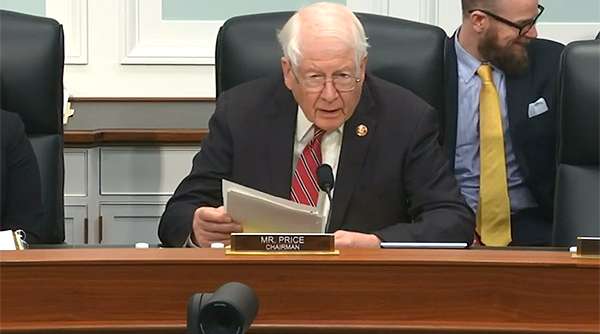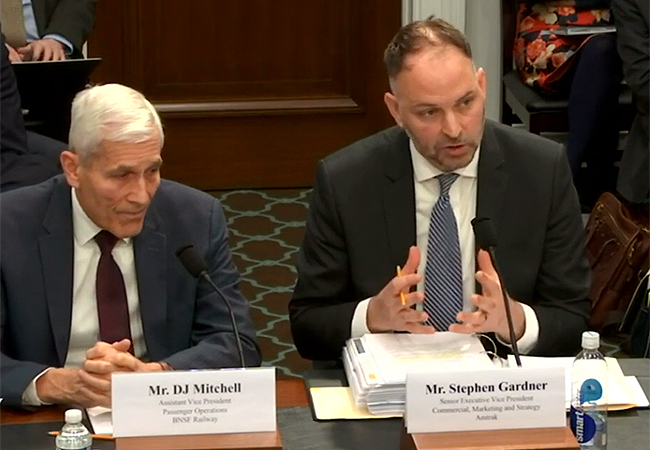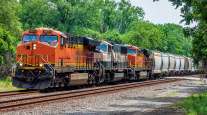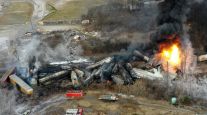Senior Reporter
BNSF, Amtrak Detail PTC Progress at House Hearing

Executives from BNSF Railway Co. and Amtrak assured federal lawmakers of their firms’ adherence to congressionally mandated requirements regarding automatic braking technology.
Addressing members of a House funding panel March 12, DJ Mitchell of BNSF said the railway had demonstrated leadership in deploying positive train control technology.
The firm “fully deployed PTC facilities and equipment on its network,” said Mitchell, assistant vice president of Passenger Operations at BNSF. He added the PTC system is interoperable with Amtrak, and it is operating on Amtrak and commuter lines it hosts, as required by federal regulators.
Stephen Gardner, who heads commercial, marketing and strategy at Amtrak, told the same panel the passenger railroad had made “great strides” on the implementation. He explained Amtrak’s PTC system is operating over the “vast majority of Amtrak-owned or controlled track,” as well as across 84% of the host railroad network.

BNSF senior executive DJ Mitchell (left) and Amtrak executive Stephen Gardner via House Appropriations Subcommittee/YouTube
The Amtrak executive added, however, “In places where the hosts have not completed PTC, those railroads have all complied with the law regarding alternative schedules, and Amtrak has adopted an array of risk-mitigation measures to provide additional protections in the meantime.”
Rep. David Price (D-N.C.), chairman of the transportation funding subpanel in the House, described the rail ecosystem as “complex” and stressed the need for collaboration between industry and government entities.
Subcommittee ranking Republican Rep. Mario Diaz-Balart of Florida argued that investments stemming from federal accounts are “just one piece of the puzzle.”
“Linking the federal resources to innovation, and with public and private partnerships, will be a key to building our future rail infrastructure for the next generation,” Diaz-Balart added.
For fiscal 2020, the Trump White House is requesting that Congress approve $13 million for PTC implementation. It also requests $9.5 million to improve technology to evaluate track conditions.
The U.S. Department of Transportation’s summary of the budget request indicated the Federal Railroad Administration had conducted research, engaged stakeholders, provided financial assistance and assessed civil penalties with regard to PTC.
“FRA will continue to target resources toward the most pressing safety challenges, such as implementation of positive train control,” according to DOT’s budget document.
In the past two years, PTC implementation increased from 16% to 83% for freight railroads, and 24% to 30% for passenger railroads. Additionally, locomotives with PTC increased from 42% to 100% for freight railroads and from 41% to 91% for passenger railroads over the same time frame, the department said earlier this month.
“There were several extensions given and, again, nothing happened on this until we came into office. And I would like some credit for that,” Transportation Secretary Elaine Chao told reporters March 11.
The Association of American Railroads emphasized that Class I railroads met 2018 requirements, adding that those railroads are expected to finalize their PTC implementation by the Dec. 31, 2020, deadline.
“Each day, the freight railroads expand PTC operations, further reducing the risk of accidents on the nation’s rail network,” Ian Jefferies, CEO of AAR, said in January.




